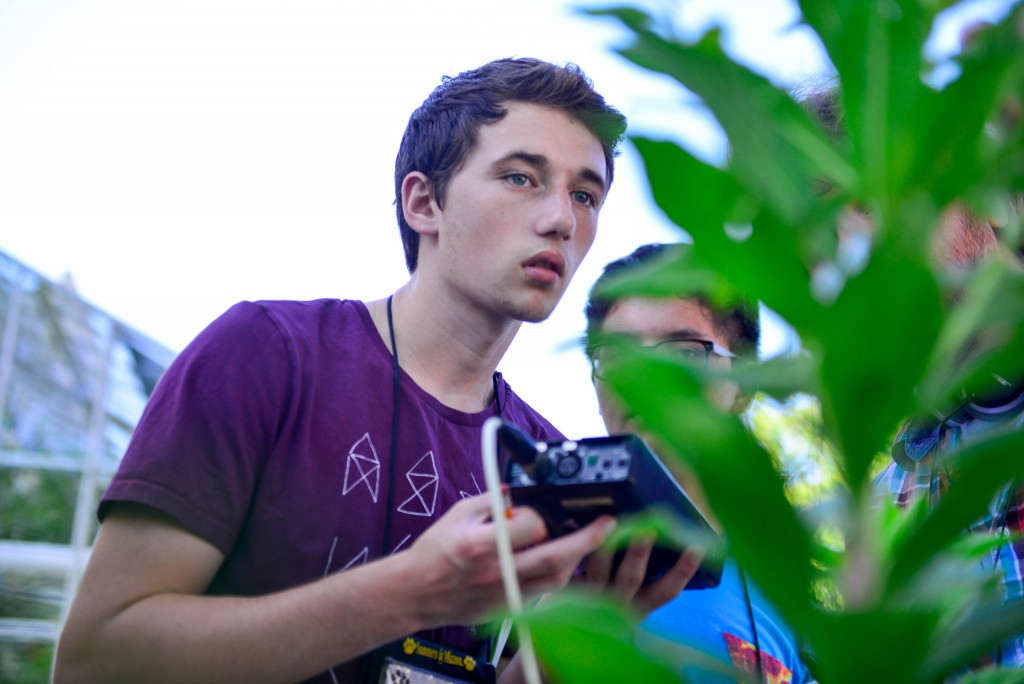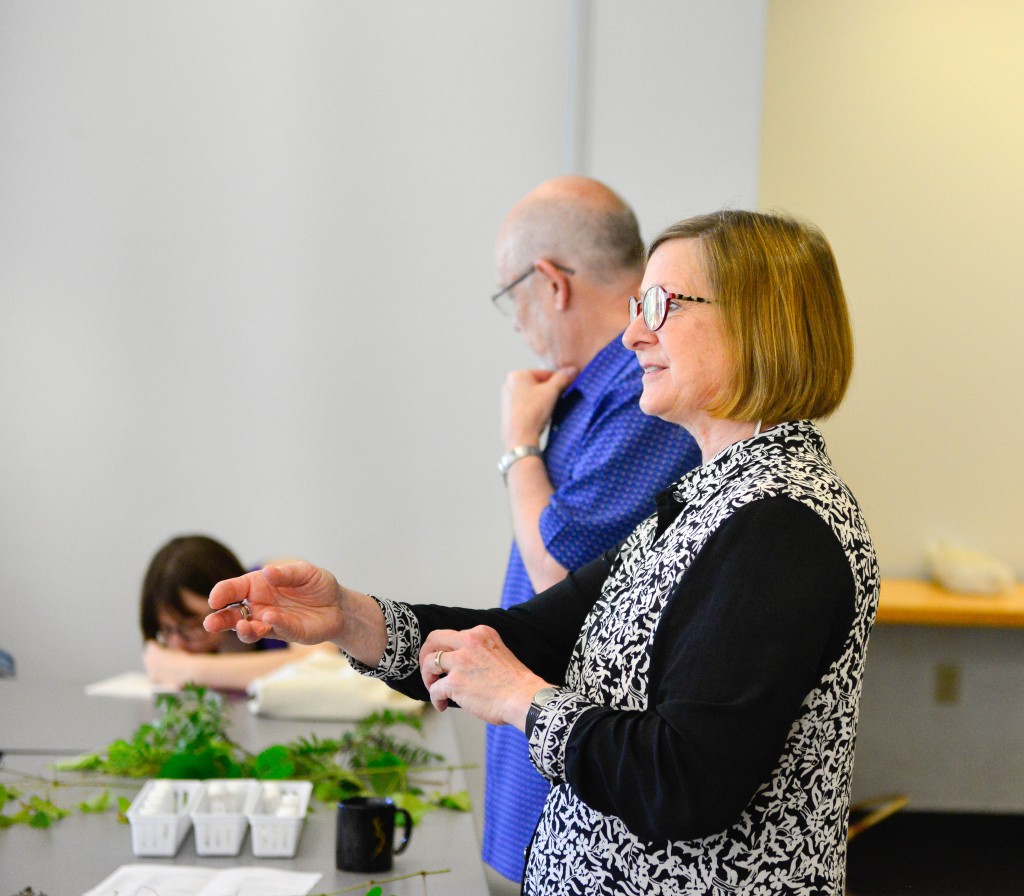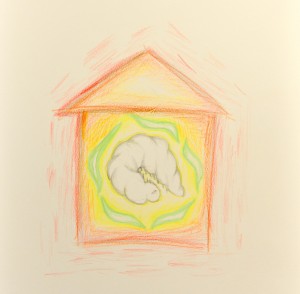By Caleb O’Brien | MU Bond Life Sciences Center

Emily Fulcher came face-to-face with science while dissecting a hackberry gall: “Ewww,” she exclaimed, “it’s peeking out a little bit!”
Fulcher and 12 other high school students were observing plant galls as part of a Summers @ Mizzou camp exploring “The Arts as a Portal to Science Communication.”
The camp, which ran Sunday through Thursday afternoon, was facilitated by three interdisciplinary scholars and artists adept at bringing together science and the arts: Milbre Burch, an award-winning storyteller, poet and artist; Lee Ann Woolery, leader of the MU Extension Community Arts Program; and Suzanne Burgoyne, director of MU’s Center for Applied Theatre and Drama Research.
The goal of the camp was “to strengthen interdisciplinary research,” Woolery said, and to encourage “imaginative, creative minds from different disciplines to work together.”

On Monday, Heidi Appel, co-director of the Schultz-Appel Chemical Ecology Lab, and Jack Schultz, director of the Bond Life Sciences Center, were invited to give the students a crash-course on the complex realm of plant-insect interactions and the equally nuanced world of scientific research. They delved into the nature and process of science as a knowledge-generating enterprise: How do we know what we know? What is peer review? Why do grants matter?
After the talk, the students split into groups — half dissected galls and scrutinized their contents under the microscope, while the other group ventured out into the Tucker greenhouse and to the tiny prairie patch next door, where they recorded the sounds of insects pollinating and eating plants. And they visited the lab of Rex Cocroft, professor of biological sciences at MU, where they used lasers to record the vibrations produced when caterpillars munch on Arabidopsis leaves.

The rest of the week, the students explored different artistic media and disciplines to communicate science and deepen their own understanding of research. They painted, wrote, created videos and performed.
On the final afternoon of the camp, they gathered in Ellis Auditorium with the other Summers @ Mizzou camp participants, facilitators and family members for a final presentation. The arts and sciences group read brief, poetic explanations of the research they’d encountered earlier in the week, accompanied by amusing theatrical interpretations.
For Appel, the benefits of the camp go both ways: “Explaining my work to non-scientists makes me a better scientist because I have to clarify and distill my work down to a few key points,” Appel said. Illuminating her work for others affords an opportunity to step back and take a fresh look at the broader context of her research.
Cameron Christensen, a fifteen-year-old student from Jefferson City, said the camp offered a unique opportunity to learn how to convey information in different formats. The challenge of their final presentation, for example, was to “take cold data and make it lifelike,” Christensen said.
Appel, who has worked with all three of the camp’s facilitators in the past, said the camp “helps students understand that science is more than just a collection of facts.”

Communicating science is increasingly recognized as a key step in the process of conducting and disseminating research, and invoking the arts can be a valuable tool in that process.
But in a way, putting the arts back in the sciences is just a long-overdue return to a rich heritage of creative polymathy, Woolery said. In the days before ubiquitous photography, keen powers of observation and adroit draftsmanship were de rigueur for anyone doing research — witness Audubon’s exquisite watercolors of America’s birds or Santiago Ramón y Cajal’s Miró-esque drawings of neurons.
For her part, Appel sees deep parallels between the arts and sciences.
“The processes themselves are not that different,” Appel said. “We all make observations and construct mental models. Then we either test a model (if we’re scientists), or we figure out a way to depict that model if we’re artists. Hypothesis testing is peculiar to science, but the other components are not that different.”


